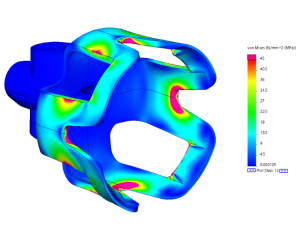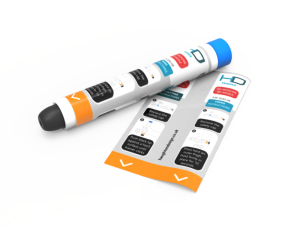
Until the future arrives where engineering drawings are a thing of the past and everything is captured in the CAD model data, engineering drawings are still an integral factor in the design and manufacture of components. For years we’ve heard that 2D drawings are no longer necessary, but most of our suppliers are still desperate for them, and for drawings to provide all of the information they need for high quality manufacture.
The methodology of checking drawings is typically a personal preference; however, drawings are usually the master document for manufactured parts. It’s paramount that engineering drawings accurately represent the design intent to prevent unnecessary problems arising in production or for issues around design robustness with on-going product quality. A first-class drawing will speed up the process of manufacture and allow features to be checked efficiently to ensure quality is maintained throughout the life of a product.
Engineering drawings vary in their complexity, from simple Feasibility drawings which mainly reference 3D CAD model exports (these are fine for obtaining prices or rapid prototyping), through to Volume Manufacturing drawings which are heavily marked with critical features and dimensions that may still reference 3D CAD model data, but have all the information required for a fully controlled design and manufacturing process. In both cases simple mistakes can be made, whether it being an incorrect weld symbol, a missing dimension or an incorrect finishing specification.
The typical self-check tools and processes for engineering drawings are as follows:
Checking the drawing as you’re drafting is the best way to capture any mistakes and implement corrective action before it’s released for formal checking. Simple things like ensuring all overall dimensions are shown and aligned to the correct features is easy to do, but the most common ones to cause an issue. However, it’s recommended not to get too held up ensuring the drawing looks perfect and focus on the essential requirements of the design intent. Neatening it up a little can come later, if required.
Haughton Design have created, checked and approved many thousands of drawings since the company was founded. Over this time an intuitive engineering drawing checklist has been formulated to capture all the typical errors seen over the years. This tool is highly valuable to HD’s design engineers as it can simplify the checking process from Concept, Feasibility, Prototype and Volume drawings for piece parts, assemblies, fabrications, mouldings or machined components. Capturing the essential requirements on a drawing for key stages in a design’s development can ultimately save time and money in the process. Creating a 2D drawing checklist for your company is strongly recommended. It helps new starters to prepare drawings, to the appropriate standard, before involving a formal check. We recommend different checklists to suit Concept, Prototype and Volume level drawings. The checklist should reflect the processes being used and the risks around incorrect or missing data. A drawing supporting a 3D model for RP purposes is much lighter than one controlling a medical device or aerospace component.
Exporting drawings from your drafting program to a PDF format can introduce new risks and create export errors in the process. Always check that the PDF output matches your on-screen drawing, as this is ultimately the drawing that will be approved for release. Having a combined PDF is great for spotting things like missing Issue Numbers, Rev Levels, general notes and drawing numbers by quickly scrolling through.
Printers are magical tools. You can do lots of screen checks but the second they print out, a seemingly perfect drawing shows errors like a beacon of light. It would be great to avoid paper printing but for some reason, an old-fashioned print can often flush out something which a screen check just can’t do. When producing a complex drawing that is produced on a large border, a decent compromise is to use A3 size as it can be incredibly difficult to spot A1 sized drawing errors on an A4 page.
Adobe DC is a useful digital tool to have in your inventory. Digital comments can be added to engineering drawings highlighting dimensions or notes, and corrective comments can be typed up next to them. These can be quickly emailed across the studio to drawing checkers to review and approve. Another key feature in DC is the PDF Compare tool. This allows you to compare two similar drawings, whether it be simple drawing-only changes, or minor CAD geometry changes. This tool can analyse the two drawings and can highlight the areas of difference, verifying that only the expected changes have been made.
Using existing software to check your output can save many hours of work, and ultimately reduce the risk of errors or missed deadlines. These many techniques of self-checking work are only a piece in the puzzle of verification and validation of the design output, however, it’s a good practice to incorporate into your everyday design workflow.
Please get in touch to learn more or discuss how HD can help you.

Discover how Haughton Design's diverse team leverages their extensive experience to drive innovation in device development. Learn about our expertise and unique insights that ensure successful project.

Explore how commercial constraints influence innovation in businesses. Discover whether budget limits, regulations, and market pressures drive creativity or stifle progress in today's competitive land.

HD strive to foster effective collaboration on all projects to push boundaries in innovation. We discuss how collaboration with the NHS can provide unique insight.

Why do we trust the accuracy of digital devices more than their non-digital counterparts? HD discuss the 'why' and how this improves device development.

We discuss the whether the medical device industry can embrace paper as a viable alternative to plastic as we advance towards Net Zero.

What is the impact of emerging technologies on medical device and product development? Design Engineer, Dan Kirkham, discusses their applications.

We discuss transforming medical device development through the utilisation of interdisciplinary, and cross industry teams.

A pharmaceutical company approached HD to enhance the performance and improve the usability of a Dry Powder Inhaler within a short timeframe and, a tight budget. .

Pharmapack 2024 was a captivating blend of innovation, collaboration, and foresight. Read our round up of the eco-focused event here.

2023's DDL event brought together industry experts in the field of respiratory health. Here we discuss the latest breakthroughs and innovations.

Should Human Factors as a standalone discipline be made redundant? Design Engineer, Elena, considers this for medical device development.

Can we achieve the perfect balance of usability, sustainability & connectivity in medical device design? Design Engineer, Rob, considers how.

2023's PDA & PODD conferences provided valuable insight into the drug delivery industry. Here we discuss trends and hot topics from the conferences.

Ahead of the 20th PDA Universe of Pre-Filled Syringes and Injection Devices Conference, we cover where medical device innovations are expected to go.

As the world becomes increasingly connected and user needs constantly evolving, the design of safety critical IFU’s must keep up with this. Design Engineer, Rob, discusses the future of IFU’s, and.

With the speed at which the medical device world is changing, collaborative partnerships will be essential for success. HD discuss the benefits.
Staffordshire Technology Park, Beaconside, Stafford, ST18 0WP
© Haughton Design 2024 | All rights reserved
Website design by: Plinkfizz
We are using cookies to give you the best experience on our website. Our policy is compliant with Google's Consent Mode v2. You can find out more about which cookies we are using or switch them off in settings .
Accept Reject Change cookie settings Close GDPR Cookie SettingsThis website uses cookies so that we can provide you with the best user experience possible. Cookie information is stored in your browser and performs functions such as recognising you when you return to our website and helping our team to understand which sections of the website you find most interesting and useful.
Strictly Necessary CookiesStrictly Necessary Cookie should be enabled at all times so that we can save your preferences for cookie settings.
Enable or Disable CookiesIf you disable this cookie, we will not be able to save your preferences. This means that every time you visit this website you will need to enable or disable cookies again.
3rd Party CookiesThis website uses Google Analytics to collect anonymous information such as the number of visitors to the site, and the most popular pages.
Keeping this cookie enabled helps us to improve our website.
Enable or Disable CookiesPlease enable Strictly Necessary Cookies first so that we can save your preferences!